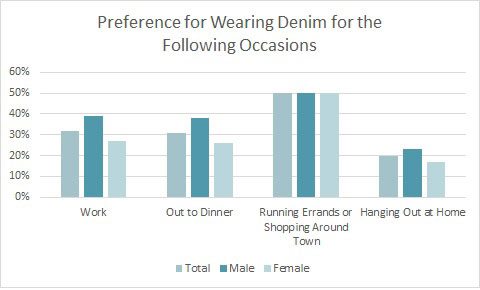Blue Jeans Turn 143
You know fashion always has a story about something being the new something? Like another color is “the new black.” Or some other item is “the new denim.” The thing about these “newcomers” is their staying power is short-lived. Meanwhile, black is always in fashion. And the blue jean is celebrating its 143rd anniversary this week. Denim has come a long way since then, yet its vintage appeal remains — with no end in sight.[quote]
We have moved away from our core collection of classic basics and are moving toward creating more pieces that feel special in style, fabrication, and quality.
Daniel Feldman
Co-Founder, Feltraiger
To put the timelessness of blue jeans in perspective, these bottoms that are equally popular with celebs, construction crews, teen guys, and moms on a girls’ night out actually originated the same year the Jesse James gang started robbing trains.
It was May 20, 1873 that businessman Levi Strauss and Nevada tailor Jacob Davis received the patent to create denim work pants that were reinforced with copper rivets at the points of strain. These were the first iteration of Levi’s 501® jeans. Today, jeans come in a multitude of washes, finishes and fits, in price points that range from budget to high end.
Jeans are consumers’ top bottoms pick for when they want to look and feel good in their outfit (32 percent) and when they want to be stylish and fashionable (25%), according to the Cotton Incorporated Lifestyle Monitor™ Survey. And jeans are the most popular for running errands (50 percent), work (32 percent) and dinner (31 percent).
To honor the latest anniversary, Levi’s created a limited edition 501® jean and trucker jacket that launched on May 1 (get it — 5/01?). The limited edition pieces feature unique constructions and custom washes. The company points out that while most jeans are sewn together first, then washed, the finish on these limited edition pieces vary by washing the fabric first, then stitching the garments. This results in unique product where no two pairs are the same.
“The inspiration for this unique design approach came from our archives and studying vintage, lived-in, patched, and reworked 501® jeans,” the company stated. “Each garment in the collection has an authentic look, paying homage to the original blue jean and Levi’s® commitment to craftsmanship.”
Almost 1 in 4 consumers (22 percent) say they purchase Levi’s jeans most often, according to Monitor™ data, followed by Wrangler (8 percent), Lee (6 percent), and American Eagle (3 percent).
On average, consumers own about 6 pairs of denim jeans, according to the Monitor™ data. And more than 2 in 3 consumers (68 percent) say they “love or enjoy” wearing denim.
Feltraiger is a newer brand in the men’s wear market. Daniel Feldman, co-founder, says the company is looking to offer a collection of timeless goods that would have worked as well 50 years ago as well as they would 50 years in the future. That translates into collections that veer away from trend-driven pieces.
“To us, this means the product that we create has to be special,” Feldman says. “We have moved away from our core collection of classic basics and are moving toward creating more pieces that feel special in style, fabrication, and quality.”
While Feltraiger might be offering more classic styles, consumers looking for the latest denim trends on sites like Popsugar will find a dizzying array of choices. There are kick-flares — cropped and flared with fraying at the bottom, optic-white jeans, as well as embellished, deeply distressed and fringed jeans (and yes, the two are very different) — among many others.
The U.S. denim market is worth about $13.7 billion, with the average consumer willing to pay about $40 for a good-fitting pair of jeans, according to the Monitor™ research. Consumers making $75,000+ are willing to pay significantly more than their lower-income counterparts — $51 versus $35.
The NPD Group’s Marshal Cohen, chief industry analyst, noted last year that Millennials represented opportunities in the U.S. denim market. He said providing a broader mix of product that appeals to a wider audience would help rejuvenate the category. Cut to last month, when Women’s Wear Daily reported that “denim is scoring at retail” with styles that range from skinny to boyfriend, embellished to vintage.
Most consumers say they are most likely to purchase relaxed (27%) or regular fit (19%) jeans, followed by boot cut (17 percent), skinny (14 percent), and slim (7 percent), according to Monitor™ data. More than 8 in 10 consumers say cotton-rich jeans are the most authentic (89 percent), softest (88 percent), most sustainable (88 percent), comfortable (87 percent), breathable (87 percent), trustworthy (86 percent), high quality (85 percent), and fashionable (80 percent).
While Feltraiger offers raw selvedge styles, Feldman says he sees the market moving in a different direction right now.
“I think the raw selvedge market was huge a few years ago,” he says. “I honestly feel like most people want immediate satisfaction and when given the option would rather buy denim that is comfortable, and already worn in and distressed. I think washed and vintage style denim as well as sweatsuit denim and denim with stretch will be the area that grows as raw denim will really be left to the market of enthusiasts.”

